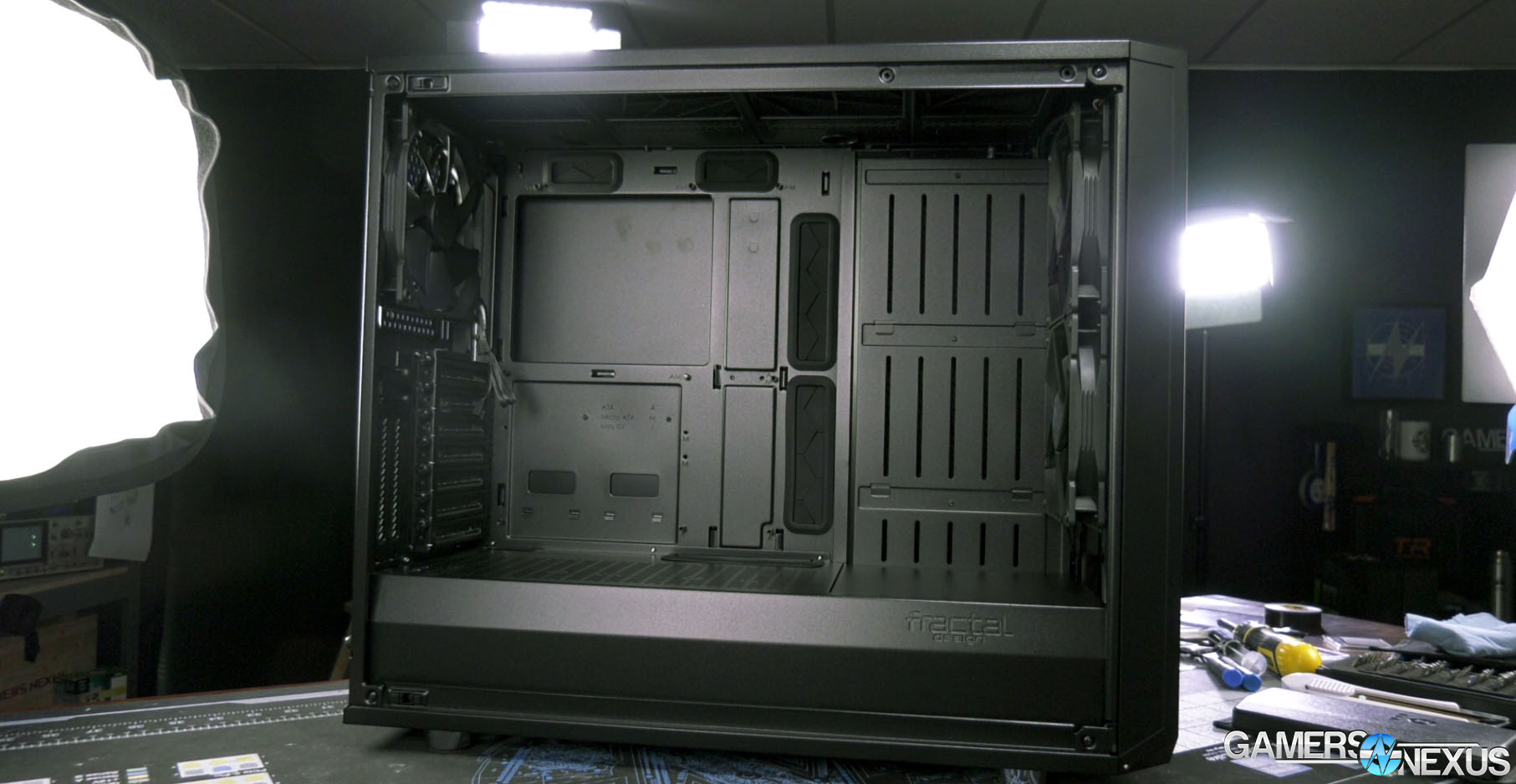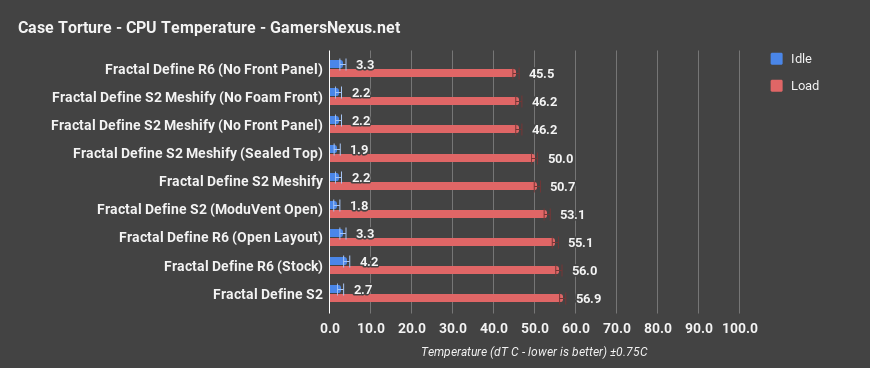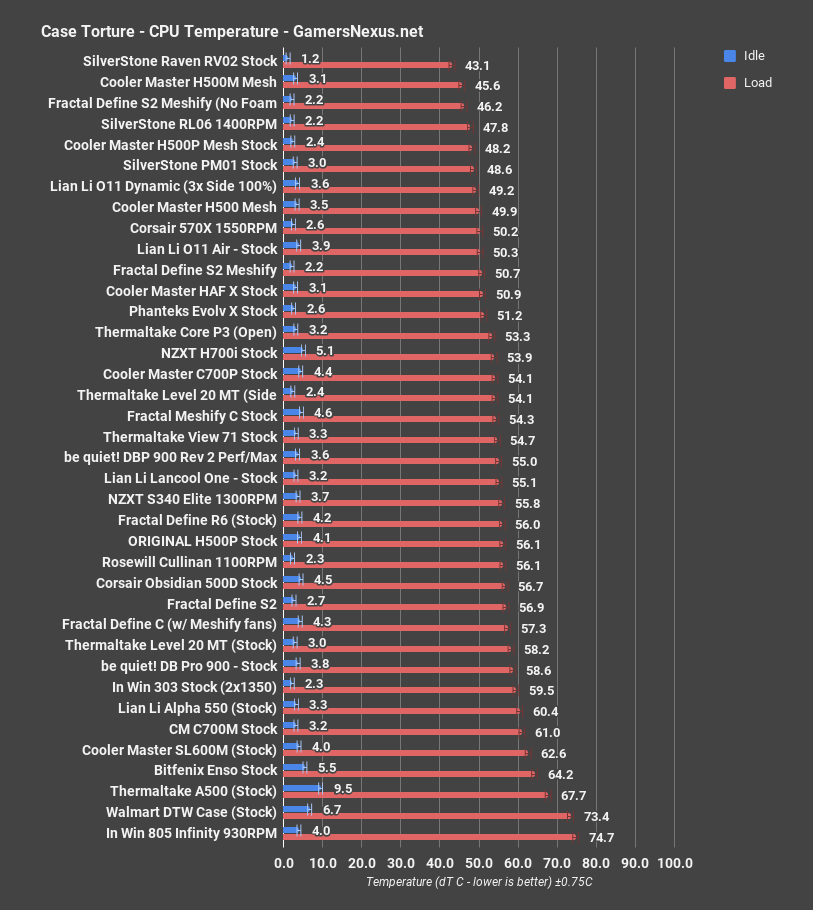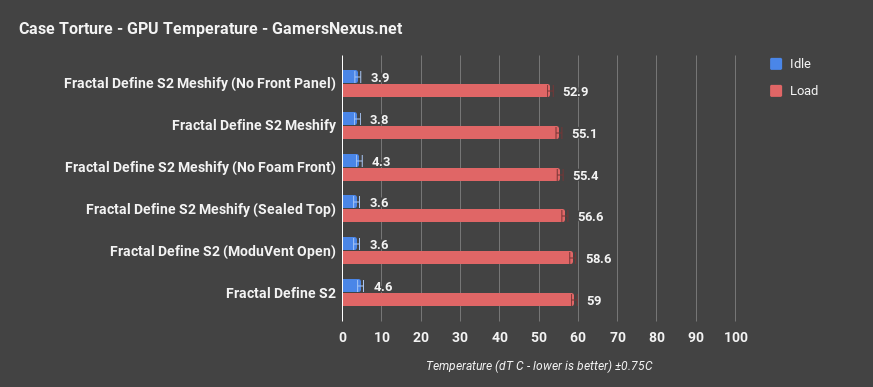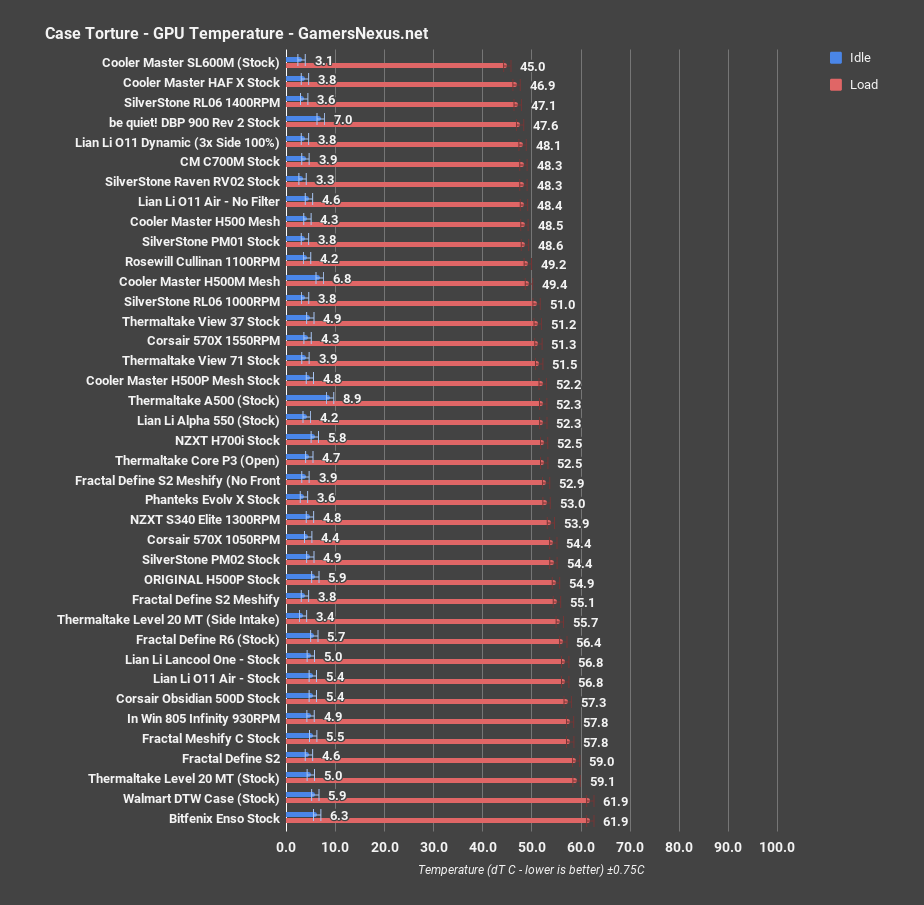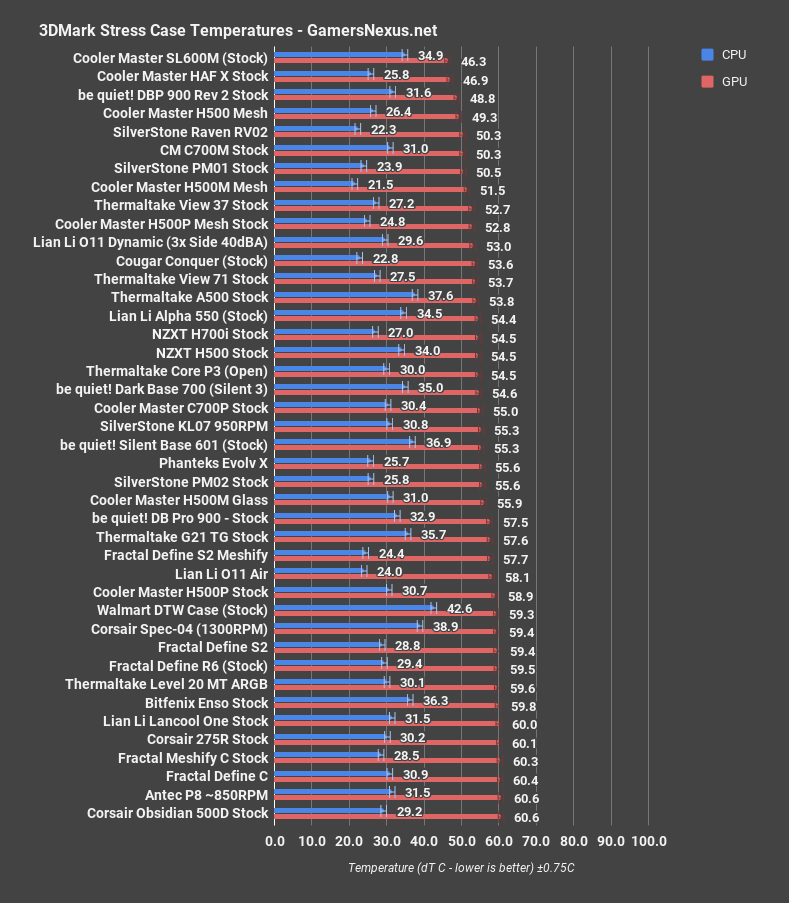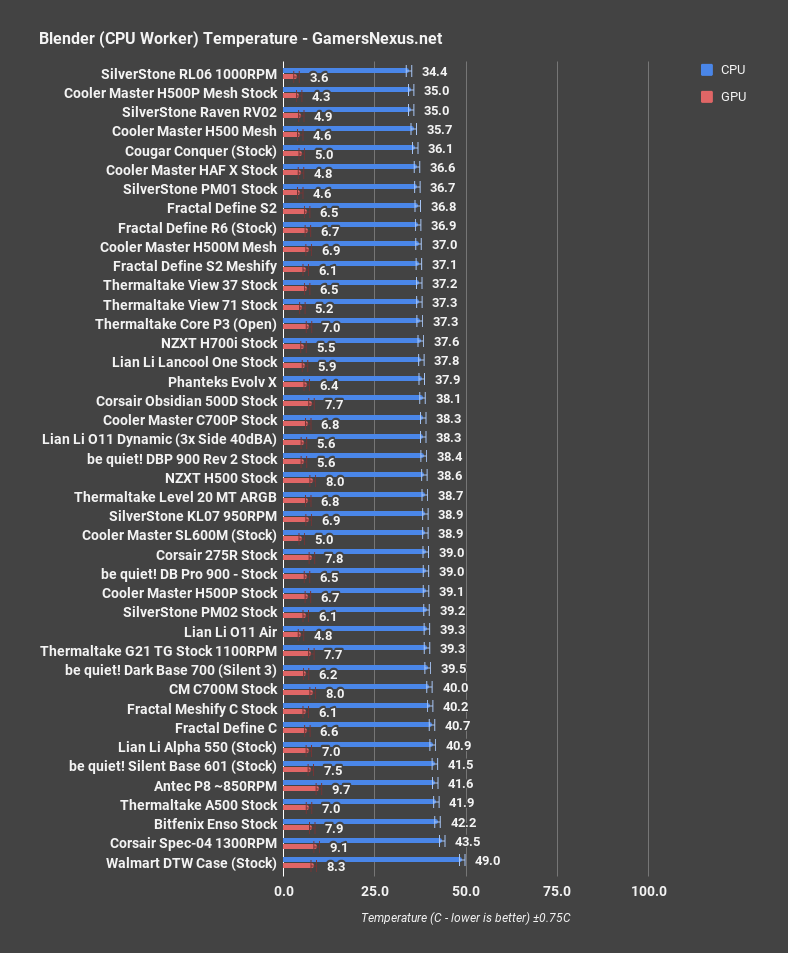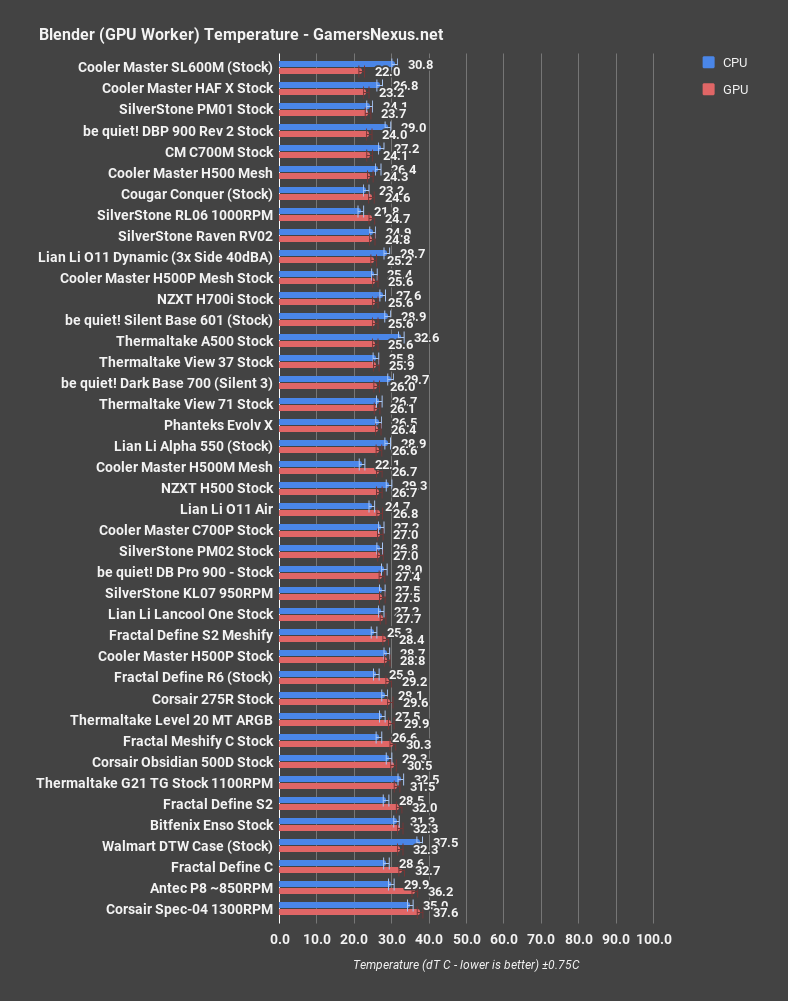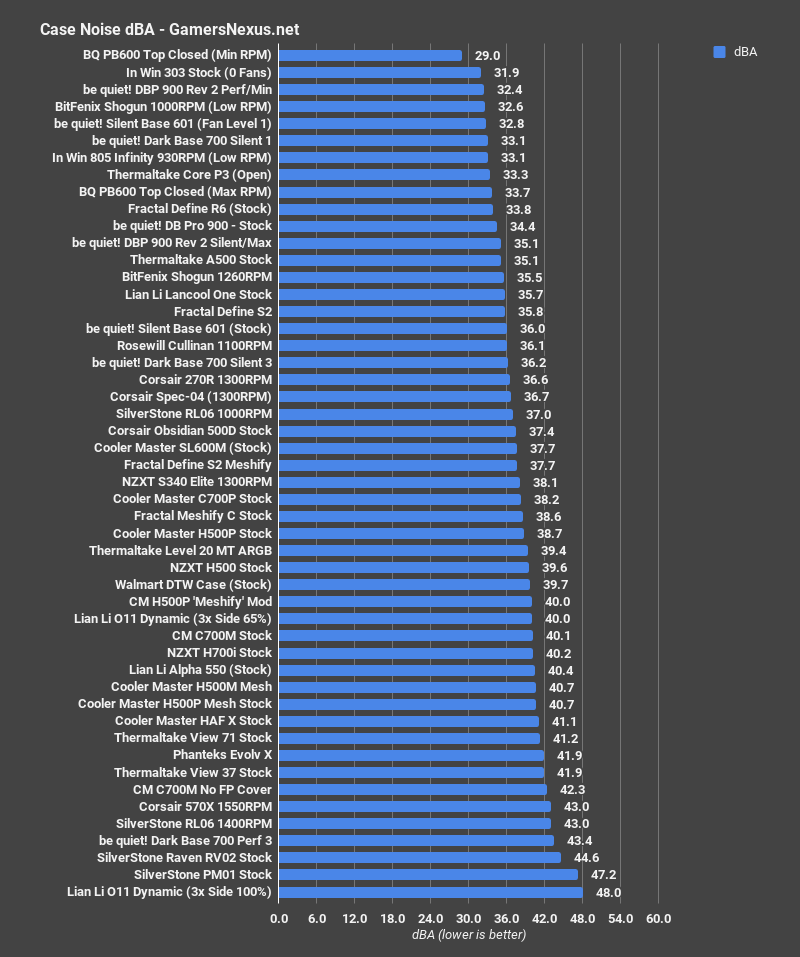This is a review of a revision of the Define S2, a case which we already dismissed as nearly identical to the Define R6 (a case we liked and found of high build quality), making this the third review we’ve published of the same(-ish) enclosure. That description may not sound promising, but the newest case’s name does: the Meshify S2 establishes a trend of Fractal “meshifying” cases by replacing solid front panels with better-ventilated ones, as they did previously with the Meshify C (another case we liked) and Meshify C Mini.
Fractal S2 Meshify Build
We wrote this section for the R6 back in 2017 and added some additional comments with the S2 in 2018. There’s not much else to say in 2019, so we’ll limit ourselves to meaningful changes.
3.5"/2.5" Universal drive brackets | 3 |
Dedicated 2.5" drive brackets | 2 included, 4 positions total |
Expansion slots | 7 + 2 vertical |
Motherboard compatibility | EATX (up to 285 mm wide), ATX, mATX, ITX |
Power supply type | ATX |
Front ports | 1 x USB 3.1 Gen 2 Type-C, 2 x USB 3.0, Audio I/O |
Total fan mounts | 9 |
Front fan | 3 x 120/140 mm (2 x Dynamic X2 GP-14 included) |
Top fan | 3 x 120/140 mm |
Rear fan | 1 x 120/140 mm (1 x Dynamic X2 GP-14 included) |
Bottom fan | 2 x 120/140 mm |
Dust filters | Bottom fan + PSU Front fans Top panel |
Front radiator | 120/240/360 mm 140/280 mm |
Top radiator | 120/240/360 mm 140/280/420 mm (max 35 mm motherboard component height) |
Rear radiator | 120 mm |
Bottom radiator | 120/240 mm 140/280 mm |
PSU max length | 300 mm |
GPU max length | Max 440 mm with front fan mounted |
CPU cooler max height | 185 mm |
Cable routing space | 23 mm |
Cable routing grommets | Yes |
Fixed velcro straps | Yes |
Tool-less push-to-lock | Both side panels |
Captive thumbscrews | HDD brackets, SSD brackets |
Left side panel | Dark tint tempered glass |
Right side panel | Steel |
Case dimensions (LxWxH) | 538 x 233 x 465 mm |
Case dimensions w/o feet/protrusions/screws | 530 x 233 x 448 mm |
Net weight | 10.04 kg |
MSRP | $150 |
Almost all of the changes are in the front panel. It’s exactly the same front panel as on the Meshify C, but scaled up slightly to fit the larger S2--and when we say exactly the same, we mean it. Other than the USB-C port on the I/O panel, even the decorative geometric design is identical to the Meshify C’s--just larger. That’s not a bad thing, but it is a bit strange that Fractal would gear up to make what is from a manufacturing standpoint an entirely new panel without updating the design at all. The duplication means that a negative feature of the Meshify C’s panel has carried over as well: the I/O is built into the top edge so that removing the front panel pulls out the cables with it. In the non-mesh Define S2 or C, the front I/O is built into a separate unit that’s screwed onto the chassis. Since unclipping the front filter must be done from the inside of the panel, and the inside of the panel is difficult to reach without removing the whole front of the case, it adds a minor layer of inconvenience to cleaning the front filter.
One other subtle change was made from the older Meshify, which is that the layer of filtration foam backing the steel mesh has much wider pores and is less restrictive to airflow. This foam is held against the uneven steel surface with spacers built into the plastic frame, which is a thoughtful touch. The top panel is exactly the same as the front, but without the decorative pattern of bends. In the normal S2, the cover is a steel plate that can be removed to leave just a filter, so in a way the Meshify’s cover is less versatile--but it does look better than the Define S2’s bare filter. Filtering exhaust is counterproductive and users that don’t intend to use a top-intake configuration should consider stripping the foam off of this cover, but it’s nice to have the option of using it.
The “springs” on the top fan mount that lift the top cover appear to be bent upwards further than they were in the R6 and Define S2, so that the panel does actually pop up when the release button on the rear of the case is pressed. This still isn’t a great system, since it marries a nice (and presumably expensive) spring loaded button with crude springs punched out of the case material that don’t work as well as they could. Still, we’ve talked about this twice already, and the slight improvement in this version means that there’s a chance Fractal listened.
Other than that, the final minor point of interest was that the fans were not connected to the fan hub out of the box. We don’t use fan hubs or controllers for testing anyway if we can avoid it, but users will need to make sure to root around for the fan cables and plug them in before tying everything down.
GN Case Testing Bench (Sponsored by CableMod)
| Component | Courtesy Of | |
| Video Card | MSI GTX 1080 Gaming X (OC Mode) | MSI |
| CPU | Intel i7-6700K @ 4.4GHz | GamersNexus |
| CPU Cooler | MSI Core Frozr L | MSI |
| Motherboard | MSI Z170A Gaming M7 | MSI |
| Memory | Corsair Vengeance LED 32GB 3200MHz | Corsair |
| SSD | Samsung 850 EVO 120GB | Samsung |
| PSU | Corsair RM650x | Corsair |
| Cables | CableMod Pro Mesh Cables | CableMod |
| Case | This is what we're testing! | - |
The video card is configured to run at 55% fan speed at all times.
Prior to load testing, we collect idle temperature results for ten minutes to determine the unloaded cooling performance of a case's fans and air channels. Thermal benchmarking is conducted for 1400 seconds (23 minutes), a period we've determined sufficient for achieving equilibrium. The over-time data is aggregated and will occasionally be compiled into charts, if interesting or relevant. The equilibrium performance is averaged to create the below charts.
Load testing is conducted using Prime95 LFFTs and Kombustor “FurMark” stress testing simultaneously. Testing is completely automated using in-house scripting, and executes with perfect accuracy on every run.
We recently validated our test methodology using a thermal chamber, finding our approach to be nearly perfectly accurate. Learn more here.
Thermals & Noise Testing - Fractal S2 Meshify
For additional tests, we removed the mesh section of the front panel (effectively removing the front panel), tried putting the sealed steel top cover from the Define S2 on top of the case, and did a test with the layer of foam removed from the front panel. We’re not too enthusiastic about layering filters behind filters, but this one is lighter weight than the original Meshify C’s was, and the Meshify C did okay in testing. There was nothing unusual about the vertical GPU mount and Fractal doesn’t include a PCIe riser cable, so we didn’t test it.
CPU Torture - Fractal S2 Meshify
Starting with only the relevant Fractal cases on the chart, the S2 Meshify and R6, which uses the same base chassis, are within margin of error for testing without a front panel. Stock CPU temperature was 50.7 degrees Celsius voer ambient during the torture test, which dropped down to 46.2C with the front cover removed. That’s a significant change, but we see much more dramatic improvements on cases with sealed front panels. Running with the Define S2’s steel top cover resulted in a 50C, within margin of error of stock. The ventilation on this top cover won’t offer a huge advantage unless a radiator or other active cooling is mounted at the top of the case. For radiators, obviously, this is a major improvement. Taking just the sheet of foam out of the front cover, but leaving the front cover on, posted an impressively large improvement down to 46.1 degrees Celsius over ambient, effectively exactly the same as the test with no front panel at all. This second layer of mesh is obstructing intake partially, although the theoretical benefit is reduced dust intake. That trade-off isn’t so bad, ultimately, but it is an interesting one. For extra cooling performance, removing this filter layer and relying on the steel mesh to catch dust is about as good as it gets.
Comparatively, 50.7 degrees Celsius over ambient is a respectable spot on the chart for a stock case, especially since the Meshify C landed at 54.3C and the Define S2 at 56.9 degrees. Keep in mind that we have some error baked-in here for testing, but there’s also variance in fan manufacturing and fan RPM run-to-run. That tolerance is about 10% in maximum fan RPM, so if testing the same style case from one run to the next, there could be some variance in there. The fans and internal layout of this S2 are the same as the older one, so most the credit goes to the new front panel and light filter layer for improvement. Removing the foam layer puts it on par with the H500M Mesh, close to the top of the chart and at 46 degrees over ambient. The S2 Meshify stock configuration is closer to the HAF X, H500 Mesh $100 case, and 570X.
GPU Torture
GPU torture testing is next, again starting with Fractal first. With no alterations to the case, the Meshify S2 hits 55.1 degrees over ambient GPU temperature. Removing the front panel had less impact compared to the CPU’s temps, lowering the temperature only a couple of degrees down to 53C. Sealing the top panel had greater effect, raising it to 56.6 degrees over ambient. That’s still not much outside the range of normal variance, but it could indicate that the mesh top allows some radiative heat to escape more readily. Again, it would take some top-mounted fans to really take advantage of the mesh cover, and we’re sort of within error, here. Removing the foam layer didn’t benefit GPU dT at all, leaving it within variance of the stock temperature at 55.4C. Taken together with the CPU temperatures, it seems like the foam is light enough that it can do more good than harm, but our personal preference is to remove it for maximum cooling performance.
55.1C GPU dT is just average when considering our whole database of results, but it’s significantly better than the Define S2’s 59-degree result, better than the low-fan-count stock Meshify C’s 57.8-degree result, and better than the Define R6’s 56.4C. In that context, it’s a success. Since removing the front panel doesn’t wildly improve things, it seems that the obstacle to better GPU cooling is the positioning of the fans and their relatively low speed. Comparatively, this case is in the lower-third of our truncated list of results, placing around where the Level 20MT and H500P sit. It’s really not great overall, particularly for the mesh front, but this comes down to static pressure of fans. Fractal is still using fans that overall favor silence to performance, and that shows here. We’ll look at that in the noise section to see if it balances out. It’s better than Fractal’s previous designs for cooling, but this does show us that a mesh front doesn’t mean everything. Other design elements still have to line-up, and PSU shrouds or cramped GPU chambers do limit cooling potential, even when mesh is present.
3DMark Firestrike Thermals
Firestrike Extreme raised GPU dT to 57.7C, a couple degrees higher than in the torture test. That’s about the same as the Thermaltake G21 TG, a case that really did have problems with restrictive filters. Just as in the torture test, though, the Meshify S2 outperformed the Define S2, the R6, and the Meshify C. It’s bordering on “bad” when stock, but the user is given enough tools to fix performance with the right cooler choices and fans.
Blender Thermals
Our Blender tests are a real-world workload, and should be more representative of temperatures that will be seen during normal use. The CPU dT during the CPU render was 37.1C, which compares favorably to the rest of our chart, but not any better than the Define S2 and R6. We are within margin of error of the Define S2 non-mesh case, which is again a result of limited heat load generated by this test. Without the extreme heat of the torture test, the differences between a well-ventilated and sealed front panel aren’t highlighted as sharply, which is why we have this single-device workload for demonstration.
The GPU render averaged 28.4C dT on the GPU. Again, that’s better than any of the previous Fractal cases in terms of GPU temperatures, but not exceptional on the whole. Fractal deserves credit for improving on the thermals of their existing case design, and the case isn’t going to do any harm to GPUs, but it seems that the stock Meshify S2 isn’t the best-suited enclosure for air cooled GPUs.
Noise
Acoustics have the case at 37.7dBA, which is about where the SL600M sits. It’s really not bad for a more open, airflow-focused case. That’s largely fan choice by Fractal. The company is trying to find a balance between performance and noise, and this ranking on the acoustics chart is reasonable overall.
Conclusion
The S2 was a fine case, and our main complaint with it was that it was the same thing as a product that Fractal was already selling. The previous conclusion was more or less that buyers should choose whichever was cheaper, either the R6 or the S2, but that most other differences were minimal (some liquid cooling support notwithstanding). Branding it as Meshify and improving the thermal performance is the stand-out feature that it needed. Ironically, price cuts to the original S2 have it down to $100 on Newegg at the time of this writing, making it a fair competitor to its S2 Meshify sibling for those who don’t need the extra airflow. For that matter, the Meshify C is down to $90, with the only real disadvantage being its smaller size and therefore more limited cooling options.
We like Fractal’s Meshify routine, but we hope to see them mix things up a little with the design in the future. They’ve built a good reputation on plain and serviceable cases, but it’s been a couple years since the Meshify C launched, and eventually customers will want some variation in style. The S2 Meshify is a good case on the whole. Its primary competition comes from larger alternatives, like the NZXT H700 (non-i) or CM H500P Mesh. Neither of these looks anything close to the S2 Meshify, allowing Fractal a firm place in the market for its style while catching-up thermally in some tests.
Editorial, Testing: Patrick Lathan
Test Lead, Host: Steve Burke
Video: Andrew Coleman
